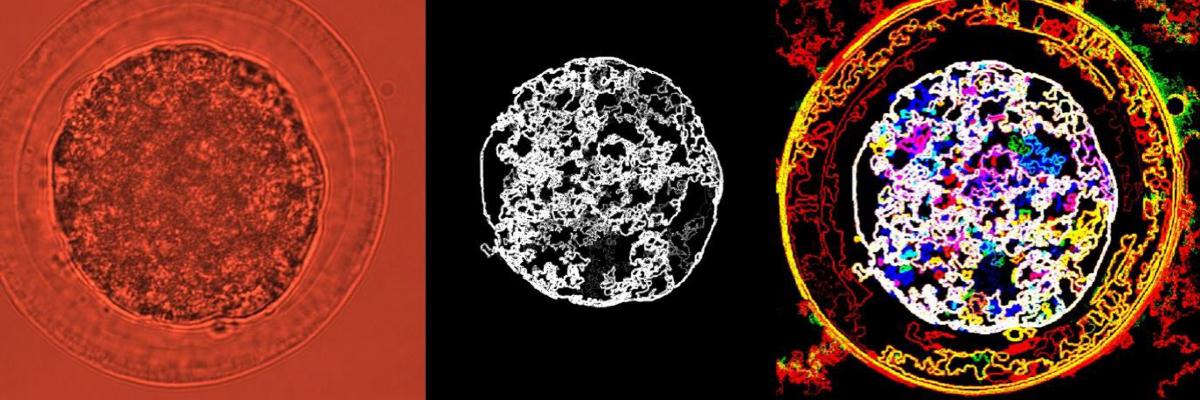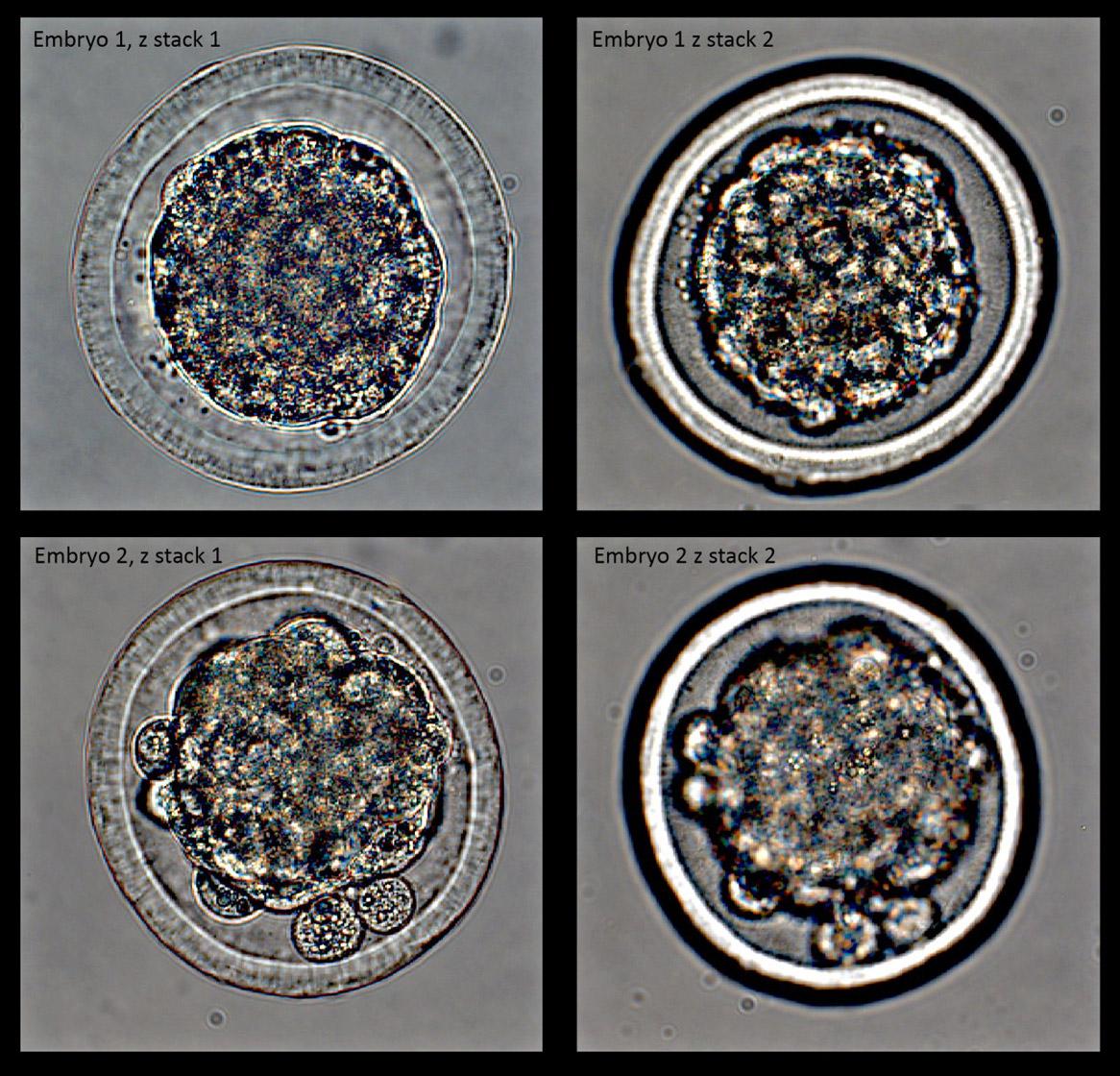How can human reproductive medicine techniques help improve livestock artificial breeding programs?
Case study: Improving the reliability of female focused livestock artificial breeding
The Davies Livestock Research Centre has adapted an approach first used in human reproductive medicine, to determine whether embryos would successfully establish a pregnancy using specialist images collected prior to transfer.
The benefits of this research will be higher confidence of predicting successful pregnancy in livestock artificial breeding programs.
This project is led by Professor Jeremy Thompson from the University of Adelaide Medical School and in partnership with the MLA Donor Company, Holbrook Vet Centre and Quantitative.

Fig 1. Grey scale and colour adjusted imagery of embryos.
Uptake of female focused advanced artificial reproduction (ART) in bull breeding herds remains low which limits the rate of genetic gain.
Our aim is to improve efficiency and thus reduce costs per calf making advanced breeding methods more attractive. This is expected to lead to significantly greater adoption of female ART within bull breeding herds.
The major interlinked limitations to the use of embryo transfer technologies by bull breeders stem from the modest but variable pregnancy success rate of transferred embryos which for Multiple Ovulation and Embryo Transfer (MOET) currently averages approximately 60% and for In vitro Fertilization (IVF) technology, pregnancy rates are in the order of 40% for mature cows and lower and very variable for juvenile animals (JIVET).
This low success rate means a large numbers of recipient cows need to be managed, and hence there is a significant on-farm logistics challenge and high overall cost per live calf born.
Traditionally an embryologist has assessed an embryo and determined whether it is suitable for transfer or not.
The current method recommended by the International Embryo Technology Society (IETS) grades embryos based on morphological classification as 1. Excellent or Good, 2. Regular, 3. Poor. This embryo grading approach is subjective and operator dependent. Embryos classified as 1, (excellent or good) have higher successful pregnancy outcomes than regular embryos.
However, there remains considerable scope for improvement in the assessment. Improving objective assessment of embryos by analysis of digital images is an ideal approach as it is non-invasive, objective, with high reproducibility, and can be carried out in “real time” thus facilitating the selection of freshly produced embryos for immediate transfer, or freezing.

Some 476 high resolution images of day 7 embryos were collected on properties across southern Australia from a range of breed types including Angus, Poll Hereford, Wagyu and Composite cattle with pregnancy outcomes also collected.
A machine learning approach was used to assess the predictive capacity for pregnancy establishment from imaging of routinely selected transferable cattle embryos prior to transfer.
Outstanding results were achieved with the probability of an accurate prediction for MOET embryos of 88% and for JIVET embryos of 96% (a probability over 95% is considered a highly predictive assay).
Follow up studies
In a follow up study, positive predictive value and negative predictive value were determined in a new data set.
Positive predictive value (PPV) is the probability that embryos with a positive screening test truly are going to lead to pregnancy. Negative predictive value (NPV) is the probability that embryos with a negative screening test truly are not going to lead to pregnancy.
For the cattle industry, it is paramount that embryos that test positive, are indeed truly positive otherwise the cow would be given an impaired embryo.
If we predict a positive but the classifier is wrong, it’s a critical problem since inserting a poor embryo could waste time and money. Hence a very high positive predictive value will ensure the likelihood that we choose a truly good embryo leading to pregnancy.
Now consider if the classifier predicts a negative, then we will not use this embryo, if it turns out that the classifier was wrong (in which case the embryo was a good one) we have wasted an otherwise perfectly good embryo.
Positive prediction values of over 95% were achieved such that a recipient cow would only ever poorly implanted one in twenty times.
The Davies Livestock Research Centre is now working with Holbrook Vet Centre and clients to undertake a prospective study whereby the pregnancy prediction results from image analysis will be generated prior to pregnancy testing occurring.
If the exceptional predictive performance from the initial studies is maintained, we look forward to equipping service providers with the tools to reliability increase artificial breeding program performance.
